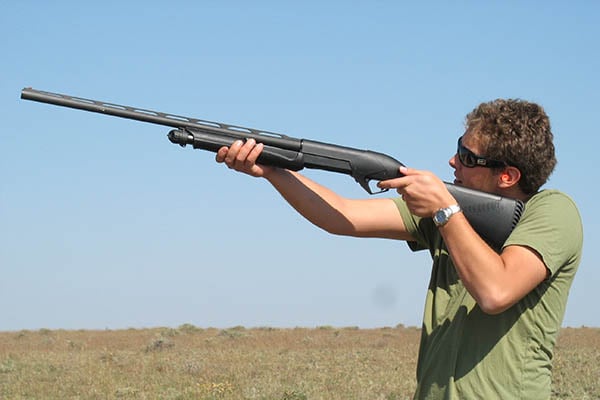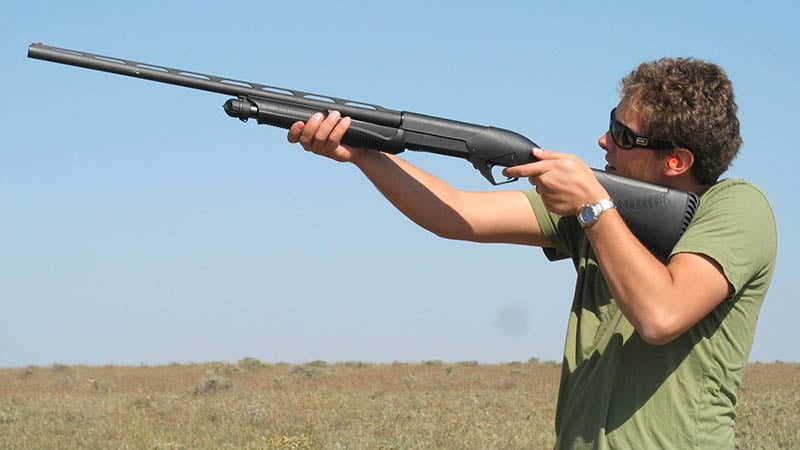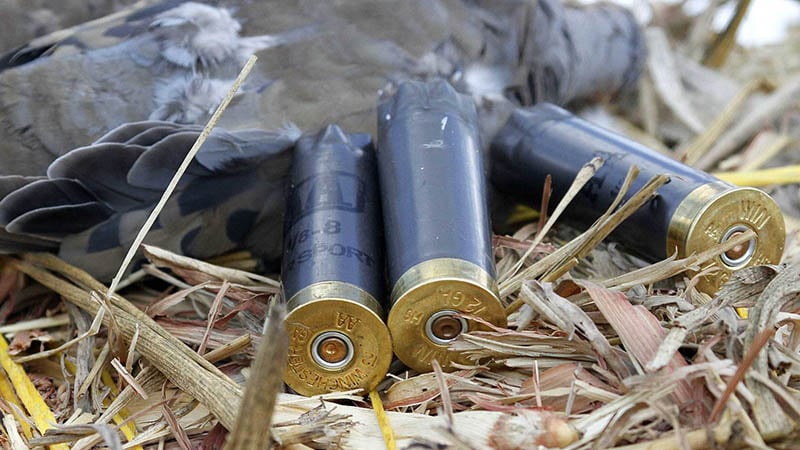
Last Updated on
The speedy dove leaves thousands of confident shooters in dismay every year. Make sure that you have a good shotgun and the right shell loads so that you can increase your hit/miss ratio this season!
Dove hunting is a sport that people of all ages and backgrounds can enjoy. Whether you are a 50 year old hunting veteran or a 12 year old that has never done any kind of hunting, you can head out to the field with the right equipment and have a great time.

Some hunters get by without most of the helpful tools available for dove hunting, but no one can have success without a reliable shotgun. Although most new hunters borrow a friend’s shotgun their first time out, you will eventually need our own to be as comfortable and accurate as possible.
However, it will require some time and commitment to find the right shotgun and shell loads for you. This article should be a good start to learning the options that are available.
Shotgun Types
There are three basic types of shotguns: pump-action, double barrel, and semi-auto. Each has its own set of advantages and disadvantages.
Pump-Action Shotgun
The pump-action shotgun is the most basic of the three designs. This works to its advantage when it comes to reliability, weight, maintenance requirements and durability. It also helps to keep the cost down for entry level buyers. Most dove hunters start with a pump-action shotgun due to these advantages.

On the other hand, pump-action shotguns also fall short in a few areas where the other designs stand tall. For example, the act of pumping these guns can throw a beginner off between shots. The pumping action takes time and requires some amount of force.
When dove hunting, the time between shots can be critical and any action that takes a hunter’s focus away from the flying bird is a disadvantage. The pump-action shotgun’s other disadvantages revolve around inconsistent shell discharging, safety, single barrel choke option and lack of recoil.
Double Barrel Shotguns
When it comes to double barrel shotguns, there are actually two styles: side by side and over-under. Over-unders are more common, especially among bird hunters. The action on these shotguns can be considered slightly more complicated than in a pump-action gun; however, the basic idea of this design is still simplicity.
The breaking action common to double barrels allows the gun to be carried in the safest way possible, with the break open. This break action also makes it easy to keep discharges shells from flying everywhere on the ground. You can simply open the break, grab the shells and put them in your pouch or bucket.
For hunters who are experienced with using different chokes, it can be a big advantage to have a different choke tube in each barrel. It allows the hunter to use the optimal choke for each shot. This is one of the biggest advantages of the double barrel design.
On the other hand, the break-action loading style allows only two shells to be in firing position at a time. The double barrel design can make it difficult to load in confined spaces, and the overall weight of the gun can definitely be a disadvantage.
Semi-Auto Shotguns
Semi-auto shotguns use the most sophisticated design of the three types and typically come with a higher price tag. Many shooters believe they are worth the extra cost due to their faster shooting capacity, lighter weight, reduced recoil and third shot capabilities.
While the reliability and durability of semi-autos has improved greatly over the last few decades, these guns still require more maintenance than other styles. Like with pump-actions, shell discharge can also be an issue. Cost is usually the major limiting factor when it comes to entry-level hunters.
Dove Hunting Shotguns
Most hunters don’t actually have a gun they use only for dove hunting. Most basic hunting shotguns will do a good job bringing down dove. A dove hunting shotgun just needs to have choke tubes and handle lighter loads effectively.
If you really want to have an exception dove hunting shotgun, you should be focusing on recoil dampening, weight, gauge and overall comfort. You will most likely be taking a lot of shots during a hunt, so a gun that does a good job reducing recoil will make for a much more comfortable experience.

Most of the time, recoil reduction comes with added weight; however, there is a balance here between getting a gun heavy enough to swing smoothly with low recoil and getting a gun light enough to keep up with the evasive maneuvers of the dove. Some people feel comfortable with heavier shotguns, while others find that the weight reduces overall comfort.
The perfect gauge for dove hunting is still up for debate. While some beginners like to use the old .410 shotgun, sometimes that’s just not enough power to bring the birds down effectively and consistently. Many hunters use the same 12 gauge they use for all shotgun activities (which is what I do personally), but others argue the 12 gauge is unnecessary for dove and just adds recoil. The 20 gauge is probably your best bet if you’re looking for a shotgun for dove hunting only.
Dove Hunting Shell Loads
When choosing your shells before the hunt, stick to smaller shot sizes such as 7 1/2 , 8 or 9. These shells offer more pellets per load and it only takes a few small pellets to knock a dove out of the air. For example, one ounce of 6 shot has about 186 less total pellets per load than an 8 shot.
The most common load weights for dove are 1 ounce and 1 1/8 ounce. Although a heavier load may help you hit some longer shots, it will also make your shoulder sore much faster than a lighter load. If you go through several boxes of shells during the hunt, this can make a major difference.

You should also consider spending a little bit more money on target loads. These loads are designed for skeet and trap competitions. They tend to be manufactured to tighter tolerances that could give you an edge on shooting percentage. Any edge you can gain trying to hit those speedy birds is worth it!
Finally, make sure to check the regulations for your hunting area. Although most areas allow the use of lead shot shells, there are some areas that require non-toxic dove loads. Non-toxic loads are more expensive than lead loads and some argue that they will deteriorate your gun faster, so most hunters stay away from these loads unless they are required.
With a good shotgun and the right shells, you can hit the fields in confidence this season. Stay safe, have a great time, and good luck!




Leave a Reply